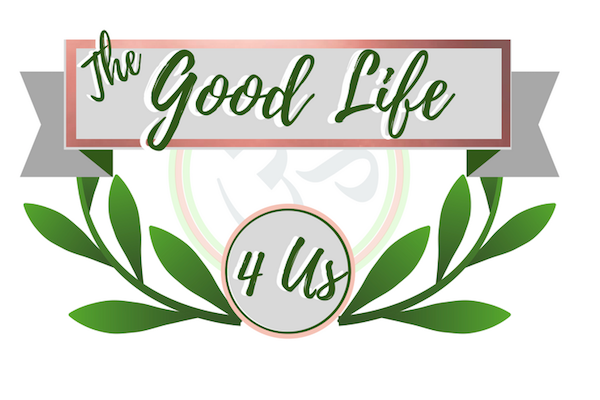Are you aware of how many toxins are in your self-care products?
Do you know that cigarettes cause cancer? Most of us do. Did you also know that you might be getting cancer from your shampoo? your cosmetics? your everyday products? Few people are aware of the hazardous chemicals in our personal care products. This is shocking because there are so many every-day ingredients that are known carcinogens. (A carcinogen is defined as any substance or agent that tends to produce cancer.)
I lost my best friend to cancer when we were both in college. As a result, I have lived a health-conscious life ever since. I was ignorant for many years, though to the idea that the products I put ON my body were probably as important as what I put IN my body. That is, until I was introduced to the facts in my late 20’s via a booklet titled, get this:
“Rub a Dub, Dub . . . Is Cancer in Your Tub?”
Pretty catch (and horrifying), right? It was meant to be. This booklet was created to introduce people to the need for education and caution when it comes to selecting the products your family uses. I recommend it if you can get your hands on a copy, even though you can find the information via a simple internet search. I remain shocked by how many people don’t know this vital information and I feel called to draw attention to it.
Could YOU be at risk?
Most likely.
🚺 If you are an average woman, you use 12 personal care products and/or cosmetics a day, containing a total of 168 different chemicals. One hundred and sixty eight!!!
🚹 Men, while using fewer products, are still exposed to 85 chemicals daily.
✅ Teens use an average of 17 products/day and consequently have even more exposure.
The really scary thing about this? This exposure occurs daily for a lifetime.
Consider that your skin is your largest, and most permeable organ. Sixty percent of what we put onto our skin is absorbed into our bodies. 60%!!!! Just about anything you put on your skin will end up in your bloodstream and distributed throughout your body. Furthermore, once these chemicals find their way into your body, they tend to accumulate over time because you typically lack the necessary enzymes to break them down.
Of the almost 13,000 chemicals used in cosmetics, only about 10% are regulated. The FDA has the authority to regulate harmful ingredients, however they usually don’t. Because the personal care industry is a $60 billion dollar industry, there is a lot of money being spent to keep it that way.
Do you question the ingredients in your products? People don’t typically make the connection between what we put on our skin and our health. As a result, our products are making us very sick.
The MOST hazardous chemicals in our personal care products:
A handful of the most hazardous chemicals are found in MANY personal care products and cosmetics. I challenge you to grab your personal care products and compare the labels to this list.
Sodium lauryl sulfate – this is makes your product sudsy, and it’s present in nearly all shampoos. The manufacturing process for sodium laurel sulfate results in contamination with 1,4 dioxane, a carcinogenic by-product. (Carcinogenic means it has a potential to cause cancer).
Phtalates – linked to birth defects in the reproductive system of boys, lower sperm-motility in adult men, testicular atrophy, and liver cancer (often hidden on labels under the generic term “fragrance”)
Methylisothiazolinone (MIT) – it’s used to prevent bacteria and may have detrimental affects on the brain and the nervous system
Toluene – made from petroleum or coal tar and found in most synthetic fragrances and nail polish. Linked to anemia, lowered blood cell count, liver or kidney damage, and may affect a developing fetus.
Some more to avoid – Synthetic Fragrances, Triclosan, Formaldehyde, Propylene Glycol, 1, 4-Dioxane (PEG or ingredients ending in –eth), Sunscreen Chemicals (such as benzophenone, PABA, avobenzone, homosalate and ethoxycinnmate).
We need to demand better!
What does all of this mean for a health-conscious person?
The best thing that you can do is expose yourself to ingredients that you can pronounce. You can replace a lot of your self-care products with a jar of coconut oil and a handful of high-quality essential oils. Whether you make your own products or switch to more natural brands, there are alternatives to the common, often toxic products that you’re buying off the store shelves. You might even find that you like them better than your old brand. This has happened to me on many occasions (especially with essential oils). One of my favorites to share with people is a haircare line I’ve discovered called MONAT. (I liked it so much, I joined the company as a market partner). You can read more about my MONAT experience here.
The point is not to compromise when it comes to your health. Look for products at your natural grocers or make your own. There are so many fun alternatives out there.
And if you don’t at first find a product you like, keep trying new brands until you do!
Marcy Vogler is a lifestyle makeover coach, personal trainer, and mother of three. Marcy is passionate about helping women make over their lives from the inside out. To learn more about the courses Marcy offers, check out our parter website at www.thegoodlife4u.club. For daily inspiration, join Marcy’s Facebook Group: Love Your Day, Love Your Life.
Thank you for taking the time to read this article. We have made it easy to save or share this article if you have found it helpful or know someone who it would help. Click on any of the share buttons on the left or hover over any photo to save to Pinterest. I like to use the hashtags #naturalproducts #hazardouschemicals #selfcare #selfcareproducts #beauty #antiaging #pampersession #feelgood #bethechange #selflove #naturalskincare #healthyskin #healthyhair #naturalhaircare #cosmetics #aesthetics #skincareroutine









